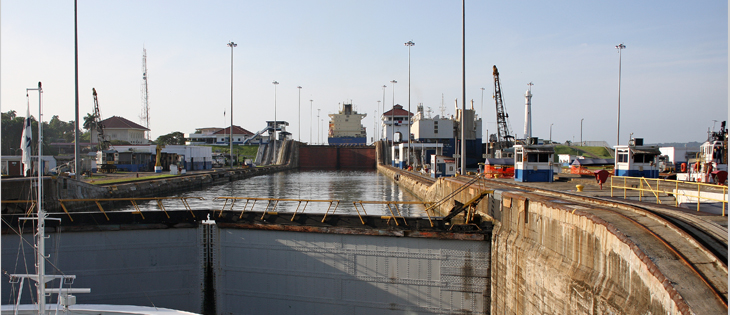Panama Canal Offers Savings for Midmarket Firms
Mid-market firms can cash in on transportation savings from a newly expanded Panama Canal. Bank of America's Doug Davidson explains.

In June, the 102-year-old Panama Canal reopened after a $5 billion project to allow bigger larger vessels to pass through the waterway. U.S. companies are recognizing growth opportunities enabled by the so-called Panamex expansion.
Q: What significant implications will the Panama Canal expansion have on trade route opportunities for U.S. businesses?
Doug Davidson: Trade routes across the United States will experience major shifts as a result of the Panama Canal expansion. Goods that were once transported via ships only to Western U.S. ports were trucked across the continent to multiple destinations, often times driving up transportation costs. The Panama Canal expansion has opened up opportunities for goods to travel directly to East Coast ports, creating a more seamless and timely delivery to consumers in the surrounding areas. This shift in trade routes also leads to infrastructure investments, such as improvements and expansions of railways and warehouses, to be able to house an influx of goods and transport them more efficiently.
I just met with a company called Flagler Global Logistics, a perishable-cargo handling company that had been transporting and fumigating fresh blueberries from South America through Philadelphia, loading them onto trucks and then driving them down to Florida. Because of the canal expansion, blueberry shipments can now be brought into the U.S. and fumigated directly through Florida, meaning fresher blueberries delivered to grocery shelves an entire week earlier, saving an estimated $3,500 in transportation costs.
Q: What are the key logistical and financial considerations businesses need to think about?
DD: Businesses need to be sure that they can meet consumer demand in terms of moving their goods across the U.S. with the proper equipment, storage space and talent, as well as supply chain processes in place, especially if there is an increase in demand. In preparation for the canal expansion, I’ve seen many businesses invest in updating their technology, anticipating an influx of imports, as well as make improvements to facilities and warehouse space to ensure their company’s supply chain will be properly supported.
On a larger scale, some businesses may need to rethink how their goods are delivered. Instead of shipping them all the way up the coast and having them trucked across the nation, goods can be delivered to more centrally located ports, substantially cutting transportation costs.
On a larger scale, some businesses may need to rethink how their goods are delivered. Instead of shipping them all the way up the coast and having them trucked across the nation, goods can be delivered to more centrally located ports, substantially cutting transportation costs.
Ports are often considered the economic engines of their surrounding regions. The increase of shipping to the Eastern ports, by as much as 10 percent according to the U.S. Department of Commerce, is going to have a vast impact on the logistics of the ports themselves. With larger ships and larger shipping containers arriving at East Coast ports, port infrastructures and entire intermodal systems have been remodeled and upgraded to accommodate more goods.
Q: Which region in the U.S. will see the biggest uptick in international or domestic trade opportunities?
DD: Given previous restrictions on the size of ships coming through the Panama Canal, there are now significant opportunities for many regions along the East Coast, shortening transportation arrival time to consumers, while minimizing costs for businesses. Based on our research, 61 percent of companies will have some foreign market involvement this year, and the top three regions U.S. companies will have international operations with are Asia (62 percent), Europe (61 percent) and Latin America (50 percent).
While many companies headquartered in Latin America often established operations with cities in Florida, such as Miami, there is now more opportunity to reach other East Coast cities as ports expand to accommodate the larger Panamax ships. For example, ports in Virginia have heavily invested in their transportation infrastructure, allowing goods to flow from the ports to their end destination most efficiently. Also, the Port of Charleston in South Carolina has deepened its harbor to allow for larger ships. These types of developments are helping to create job opportunities, while improving efficient trade from around the world to the continental U.S.
Q: Are middle-market businesses prepared for the Panama Canal expansion? What are you telling your clients as they start seeing the impact the expansion has on the local business environment?
DD: They are ready. The businesses I’ve been working with have the equipment secured and ports dredged. But it’s not just about equipment or ports, it’s about the entire intermodal system. Businesses have been investing in the cranes and talent—such as stevedores—and facilities to hold larger shipment containers, among other aspects of their businesses. I’ve seen a lot of companies make large investments in their infrastructure already and this is just the beginning.
Doug Davidson is market executive with the Global Commercial Banking division at Bank of America Merrill Lynch.


